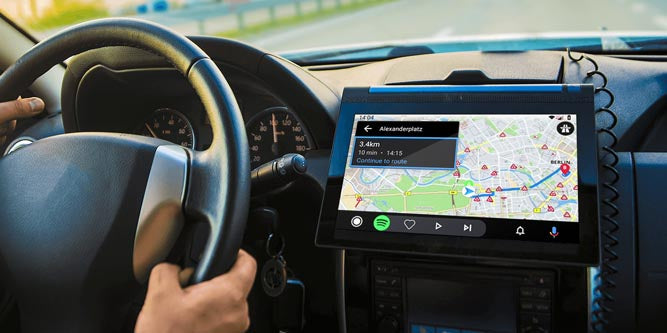
The evolution of in-car navigation systems
Equipped with large fold-out maps, setting off on long car trips used to require planning like an Arctic expedition. In recent years, GPS has revolutionized in-car navigation.
It's hard to believe now that in-car GPS navigation has been used in automobiles for more than 15 years, although it has only recently begun to be used in non-luxury vehicles. Prior to that, car owners had a collection of maps, usually stored in the inner door panels or glove box. If they were going on a long trip or to an unfamiliar destination, they'd have to pull over and unfold them like a big Sunday newspaper to figure out where they were going.

We've charted the evolution of in-car navigation systems from early portable devices to built-in voice GPS.
Early GPS
Owned by the U.S. government and operated by the U.S. Air Force, the satellite-based Global Positioning System (GPS) provides geographic location and time information to GPS receivers anywhere on Earth. It was originally developed by the U.S. Department of Defense in 1973 for use by the U.S. military, but an earlier satellite-based system, TRANSIT, was in use as early as 1960.
Publicly available GPS devices have been around since the early 1980s, but it wasn't until 2000 that sophisticated GPS navigation became available to the public. This opened the door for GPS-enabled technology to become mainstream, and it's now used in everything from smartphones to automobiles.
The road to in-car navigation
With the advent of the Internet, the process became easier as drivers could download printouts from online mapping portals that provided street maps and driving directions. However, these were far from perfect, as early routing algorithms were imprecise and drivers still had to pull over to read the next steps. If they made a wrong turn, they were as lost as if they didn't have a map.
Standalone GPS Devices and Smartphones
Eventually, these systems were first replaced by portable navigation systems from companies like Garmin and TomTom. Early devices had limited functionality and featured 2D map graphics and little else. Later systems added 3D map views as well as on-screen text and voice, and offered real-time traffic and lifecycle map upgrades.
However, as smartphones became popular with consumers in the mid-2000s, sales of portable GPS devices declined. Early smartphones featured GPS with Bluetooth GPS receivers and eventually integrated full GPS, including voice navigation. Due to the wide variety of applications, smartphones tend to offer more regular upgrades than standalone GPS devices, as well as up-to-date map data and POI (point of interest) databases.
In-Car Navigation Goes Mainstream
Over the past five years, new cars have begun to feature voice-enabled in-car GPS navigation. The driver of a modern car can receive voice-recognition-enabled GPS when using Apple CarPlay's Siri or Android Auto. These systems are more reliable because they stay in the car and work as soon as the engine is started.

